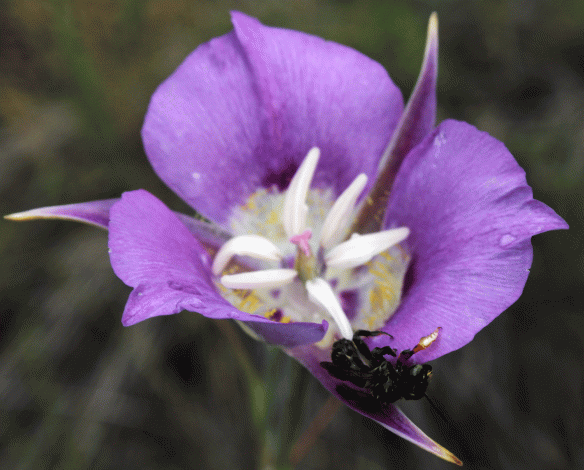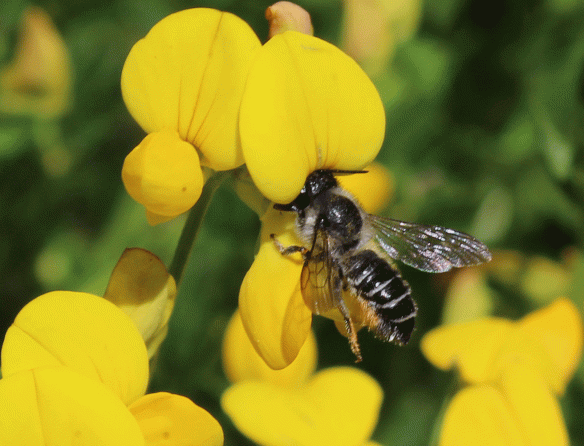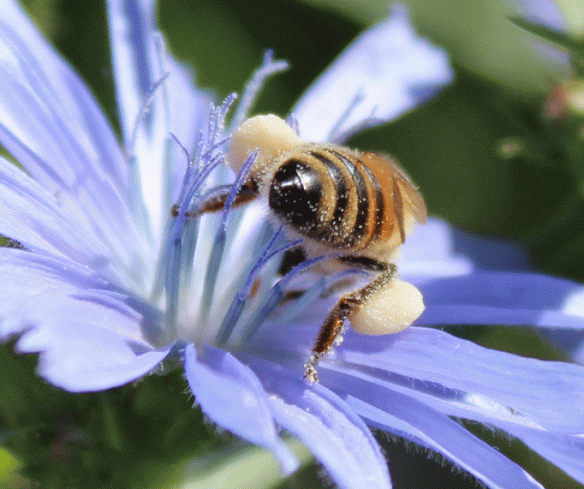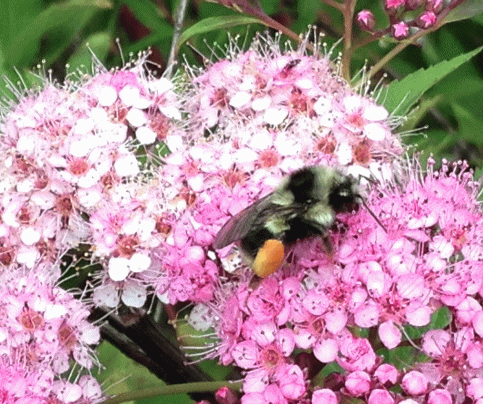Just returned from a fantastic week of bees and flowers and study and wine touring in the stunning interior of B.C. What an enriching experience it was to peer at bees in the lab, to learn more about our native bee species and then to go out into the field (literally) amidst the flowers that are the nutritional resources for the bees. (Ahem, the wine touring was not part of the course).
Our native bee ID course was led by super-star bee expert, Lincoln Best. We were at Thompson River University in sunny Kamloops; hosted by the Master Gardener’s Association and organized by master gardener and artist, Elaine Sedgmen.
I must say that one of the funniest highlights of our course was watching our fearless instructor, Lincoln Best, demonstrate how to “tumble dry” bees in preparation for pinning. Fluffing up wet bee fuzz is hard work! And listening to him describe how he had to shave the hair off a tiny bee’s face in order to find those oh-so-important identifiers, the “subantennal sutures,” was hilarious! Yup, that must have been one tiny razor!
Just a few of the stars I had the pleasure of photographing:

A bee from the Andrenidae family (I think) with a super load of golden pollen she collected from gumweed (Grindelia).

The thrill for me is always seeing how different bees collect pollen. This little bee has pollen right up into her armpits, all along her hind legs and even some on her abdomen.

Madame Beespeaker aka Lori Weidenhammer of “Victory Gardens for Bees” fame, glorying in the bee search amidst the vast, stunningingly beautiful meadow near Kamloops. The afternoon was astounding – payne’s grey menacing clouds and gold and siena fields. Unforgettable!

A very wet male bee from the Megachilidae family, waiting to dry out on the lovely petals of a Mariposa Lily. He’s got highly specialized front legs that he uses to cover the female bee’s eyes during mating. Kinky, blind-folded sex; who would have thought it?

A long-horned male bee (a Melissodes from the Apidae family, I think), and an aphid in discussion on a gumweed blossom. Hmmm, was the topic climate change or the vintage of nectar?

Perched on its forelegs and midlegs, a brilliantly striped bombus huntii (again, I think) purveys the surrounding territory.

Bumblebee (possibly bombus bifarius?) deep into the nectar of chicory, and already powdered with the off-white pollen from the anthers.

The Veronica buffet – speedwell is a favorite of many different types of bees. Here, a large bumble bee and a smaller mining bee enjoy the sweet nectar.

A leaf-cutter bee with some orange pollen on her abdomen sinks her head into the throat of a Trefoil blossom.

Honey bee with amazing pollen loads she collected from chicory blossoms. How can she fly with such a heavy weight to carry?

This bumble bee foraging on spirea has a stunning two-toned pollen load

Look at this amazing multicolored pollen load on this Bombus vosnesenskii! She’s got her head deep into a vetch blossom.

My all-time favorite newly recognized bee was this stunningly gorgeous bombus nevadensis queen I discovered foraging on thistle. She was huge! I’ve used an image of her as the header to my blog site.







